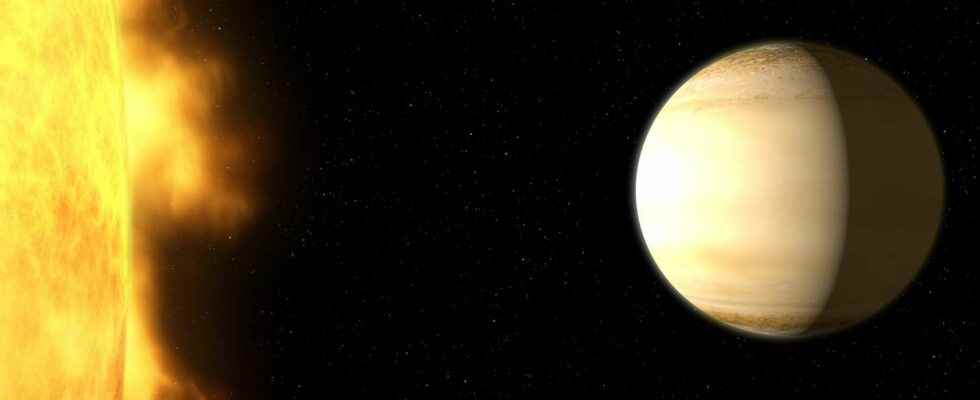With revelations about the birth of the first galaxies during the first hundreds of millions of years of observable cosmos historythese are probably more accurate and complete analyzes of the compositions of the atmospheres of exoplanets in the near environment of the Sun which make them dream astrophysicists with the James Webb Space Telescope (JWST). This is a prelude to the search for biosignatures!
We therefore understand their emotion when they let it be known that an international consortium of more than 200 researchers from the world’s noosphere has just provided definitive proof of the presence of carbon dioxide in L’atmosphere of one exoplanetin this case a gas giant planet orbiting around a star similar to the Sun, located only 700 light years from Solar system. It’s a fire artifice of press releases from research laboratories which we witness and which accompanies a publication announced in the famous newspaper Nature, but therefore a version is freely available on arXiv.
In the case of France, we can convince ourselves of this on the page Facebook from Bordeaux Astrophysics Laboratory (CNRS/University of Bordeaux) and in Quebec on the site of theInstitute for research on exoplanets (iREx), from the University of Montreal. We learn that the team of researchers behind the analyzes of the atmosphere of the Hot Jupiter WASP-39b was led by Natalie Batalha of the University of California Santa Cruz. The researcher also comments on the discovery on her account twitter.
We also learn that the exoplanet, whose mass is about a quarter of that of Jupiter and whose diameter is 1.3 times greater, given that it is heated to about 900°C, was initially detected on Earth in 2011 using the method of transit. The orbital period determined is only about four days and the radius of its orbit is barely one eighth of the distance between the Sun and Mercury.
The transits made it possible to implement the observation capabilities of the JWST made possible by its spectrograph in the near infrared NIRSpec. As the planet passes in front of its star, the light transmitted through its atmosphere shows rays ofabsorption which can be highlighted by dispersion with the spectrograph and which are a kind of bar code revealing the presence, identity and abundances ofatoms and of molecules in this atmosphere.
This is particularly easy in the case of WASP-39 b because its atmosphere is well dilated by the thermal rays of its host star, its distance to the Sun weak and its frequent transits, which allows to accumulate statistics as we say in the jargon of natural sciences, contributing to increase the precision of the measurements over time by reducing the parasitic noise the desired signals.
” The detection of such a clear carbon dioxide signal on WASP-39 bodes well for detecting atmospheres on smaller, Earth-sized planets. », Explains on this subject Natalie Batalha.
His colleague Björn Benneke, professor at the University of Montreal and at the iREx, adds in the same press release from the iREx: “ We analyzed the data here in Montreal and we saw this huge carbon dioxide signature: 26 times louder than any noise in the data. Before the JWST, we often had to dig through the noise, but here we had a perfectly robust signature. It’s like seeing something clearly on its own eyes. On Earth, carbon dioxide plays such an important role in our climate, and we are used to seeing its spectroscopic signatures here. Now we see this signature on a distant world. It really gets the message across that these exoplanets are real worlds: as real as Earth and the planets in our Solar System. “.
Methods for detecting exoplanets have greatly diversified since the 1990s. They can be classified into two main categories, direct methods and indirect methods. The three main methods are the direct imaging method, the indirect transit method and the indirect radial velocity method. Discover exoplanets through our web series in nine episodes. A video to be found every week on our Youtube channel. A playlist proposed by the CEA and the University of Paris-Saclay as part of the European research project H2020 Exoplanets-A. © CEA Research
—
LAST DAYS to take advantage of our summer offer.
Subscribe to our media for a period of 3 months and receive the Mag Futura as a gift!*
*Offer valid for any new 3-month subscription to the “I participate in the life of Futura” offer on Patreon.
—
Interested in what you just read?
